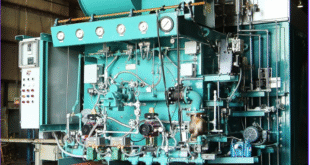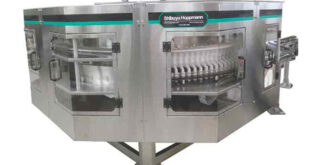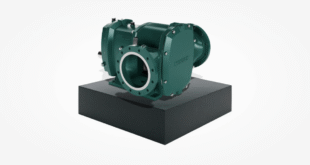Ian Chapman looks at how modernising pharma packaging with smart, connected printing can quickly boost compliance, traceability, and sustainability, making packaging a catalyst for wider digital transformation
Rising regulatory demands, sustainability targets, and operational inefficiencies create a complex, high-stakes environment for pharmaceutical manufacturers. While these challenges span the entire manufacturing landscape, certain legacy processes – such as print and packaging – often serve as visible pressure points.
Tackling these areas can offer quick, measurable improvements in compliance, traceability, and agility – without compromising patient safety. For instance, packaging processes, often considered a small element of the supply chain, go unnoticed as a source of inefficiency and risk. By applying a continuous improvement mindset, manufacturers can unlock measurable gains at every stage of production. From reducing waste and improving line efficiency to enhancing product integrity and accelerating digital transformation, this article explores how digital pharma packaging printing can become a strategic driver for change – starting with recognising the opportunity.
The missed opportunity
Digitalisation has become a core objective for pharmaceutical manufacturers over the past decade. Yet the widespread use of legacy print and packaging processes continues to limit opportunities for packaging to support reduced costs, improved efficiency, and respond to demands for innovation. Many pharmaceutical manufacturers still rely on older, standalone TIJ and TTO systems – technologies that, while once industry standard, now limit opportunities for automation, data integration, traceability. In contrast, modern connected TIJ and TTO solutions offer cloud-enabled capabilities that align with digital-first manufacturing goals. Digital printing can eliminate the need to stock hundreds of pre-printed foil variants, reduce reliance on manual labelling, enable real-time customisation, and support the introduction of smart 2D codes to unlock traceability, patient engagement, and compliance in one step.
This slow pace of digital adoption is not only inefficient; it hinders vital innovation. How can pharma manufacturers achieve the small batch sizes and late-stage customisation required for agility and responsiveness to different regulatory requirements globally? What is the roadmap for embedding smart 2D codes to improve product traceability and compliance as well as delivering greater patient engagement?
The good news is that solutions to these challenges are not only accessible, proven, and commercially viable, but can also be rapidly adopted during routine line revalidation to minimise disruption. Better yet, these upgrades deliver measurable return on investment – often within the industry’s two-year target – making digital connected packaging not just a compliance or sustainability win, but a strategic business decision.
How digital printing reduces waste and boosts line performance
Digital printing eliminates the inefficiencies associated with the use of multiple pre-printed foils. Many manufacturers overorder between 15% and 20% of pre-printed stationery for each product line, resulting in significant waste – unused pre-printed foil often sits in a warehouse for months, even years, incurring unnecessary costs and undermining sustainability goals. This inefficiency is particularly problematic for initiatives such as the NHS in the UK, which is pursuing the ambition to become the world’s first Net Zero National Health Service. Digital printing helps reduce pharma packaging waste, storage requirements, and insurance costs (typically related to the volume of flammable product stored), while also avoiding the associated costs of destroying or recycling unused foil.
Digital technologies also play a vital role in reducing the risk of mislabelled products and rejected batches due to identification mistakes or printing errors. A single mislabelled product or unreadable code can trigger batch recalls, regulatory scrutiny, and reputational damage. Inline digital printing, combined with automated inspection, helps to improve accuracy, minimise downtime, and protect patient safety.
Smarter packaging choices
Reducing waste is also a key factor in the industry’s drive to improve its environmental credentials. Rationalising pre-printed foil by adopting agile digital printing technology delivers immediate sustainability gains. One manufacturer was able to rationalise its stock of pre-printed media from 150 different variants to under eight, reducing warehousing footprint (100 pallets down to 10), logistics complexity, and cost. In addition to the measurable reduction in stock volume and wastage, further environmental benefits include fewer transport miles, reduced use of forklifts in the warehouse, and less landfill.
Beyond material optimisation, digital printing is also flexible, supporting the use of eco-friendly recyclable substrates and enabling the creation of 2D codes that unlock further sustainability gains. Smart 2D codes are key to the adoption of electronic Patient Information Leaflets (ePIL), right-sized packaging, and improved recyclability. They also enhance supply chain transparency, with additional information to help customers understand and report on relevant Scope 3 emissions.
Smart 2D codes
Smart 2D codes are also regarded as the future for delivering the next level of data integrity required in an industry facing increasing regulatory and public scrutiny. Product recalls are both expensive and hugely damaging to reputation and create potentially serious patient risk. Error reduction is key to ensuring consistent product packaging, safeguarding patients and, as a result, protecting brand reputation.
Validated digital printed solutions can improve patient safety at every stage of the process, enhancing print clarity and enabling serialisation and traceability through smart 2D codes. Integrated inspection systems further support this by ensuring every product is safe and correctly labelled, automatically flagging any issues in real time.
Safety and compliance are also enhanced by the adoption of on- or near-line digital printing which supports the move to smaller batch sizes and enable the late-stage customisation of pharmaceutical packaging, allowing pharma companies to manage diverse global market needs, from language to local regulatory requirements, without incurring additional cost or downtime, and avoid the risk of obsolete stock with out-of-date information.
Why connected packaging is a strategic imperative
The benefits of digitalisation in pharmaceutical packaging are clear and measurable. Pharma manufacturers gain faster time-to-market, lower operational costs, and improved sustainability metrics. It can reduce rework and rejects, enhance regulatory confidence, and build a platform for scalable global innovation. Most importantly, manufacturers move from reactive problem-solving to proactive performance, turning pharmaceutical packaging into a platform for efficiency, resilience, and competitive advantage.
Critically, this step change in performance can be achieved seamlessly with the right timing and partner. Manufacturers should look for a partner with proven pharmaceutical expertise, validated technology, and a collaborative approach. A strong partner will offer connected, cloud-enabled solutions, and support compliance during revalidation windows, while aligning with sustainability goals and providing integration support. Leveraging planned revalidation windows to undertake a digital upgrade allows manufacturers to innovate without slowing down production. The result is a leaner, more agile operation – delivered quickly and compliantly – with measurable ROI typically achieved within the industry’s two-year benchmark.
Ian Chapman is Strategic Manager – Digital Coding, Domino Printing Sciences.
 Engineer News Network The ultimate online news and information resource for today’s engineer
Engineer News Network The ultimate online news and information resource for today’s engineer




